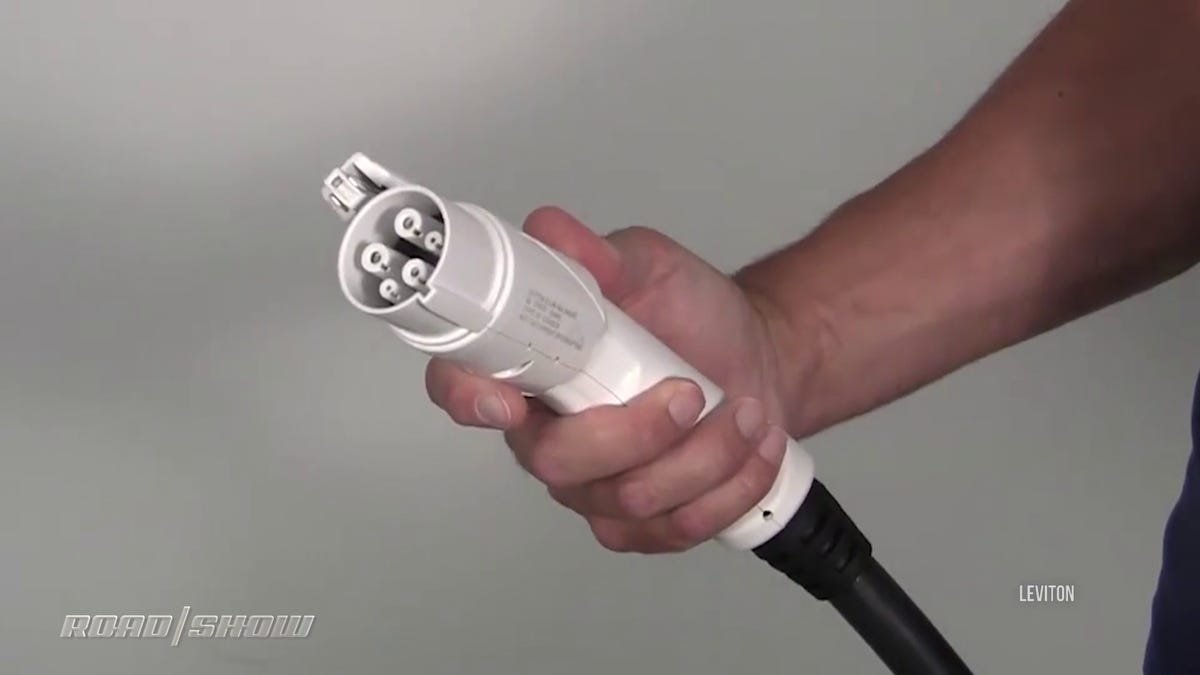Electric car charging 101
Making sense of EV charge connectors and their power levels.

lt's telling that you're sending me emails asking if your current EV charger will work with the Bolt/Leaf/Tesla/Taycan that you're buying next. First, it shows that EV dealers obfuscate charge compatibility (something I've experienced myself in researching this topic), and second, it shows that the EV market has matured to the point that it has a number of sequential buyers, just like the traditional car market.
Here's a quick summary of the connections and charges that are out there for electric cars.
EVSE
First, that thing on your garage wall or sticking up in a parking lot that you call a charger is probably not a charger. It's an Electric Vehicle Service Equipment, or EVSE, device. Basically, a smart outlet. The charger itself is in your car, carefully designed and mated to the specific battery it uses.
Not a charger itself, an EVSE is a key piece of EV charging equipment that connects to the charger in your electric car.
The first task your car's built-in charger tackles is taking the AC current supplied at most charging locations and converting it to the DC current that batteries can ingest. This is similar to what your phone's charger does with AC from a wall outlet, converting it to the 5.0 volts DC that is part of the USB standard. Unfortunately, electric cars don't have a spec like USB to make their charging uniform.
AC or DC, there are three levels of EV charge:
Level 1
This is basically 120V AC house current, capable of up to two kilowatts of power. It's a survival charge, good enough to get sufficient range to drive to a Level 2 charger. If you need a full charge from Level 1, book a room. It will take 24 hours or more for most EVs.
Level 2
This is a charge from a 240V AC source, capable of up to 90 kilowatts of power. This level of charge is what carmakers are talking about when they say you can fully charge overnight, typically within six to eight hours.
Level 3
This one is a little messy. It can refer to a 480V AC connection, continuing the pattern of doubling the voltage available in each successive charge level, but in the US, Level 3 usually means a DC power source. It's very powerful and requires no messy, inefficient conversion from AC. Tesla Superchargers are the best known example of Level 3, putting out 120 kilowatts of direct current. Porsche has said they will up the Level 3 ante with 350 kilowatt Level 3 charge locations when the Taycan arrives, and Tesla has plans to beef up their Superchargers in 2019. The key to these and other forms of Level 3 DC charging is a charge measured in minutes, not hours.
Now, to connect to any level of charge source in the US, you'll need one of the four major charge connectors.
J1772
Clumsily named after a Society of Automotive Engineers specification number, J1772 is the most common charge connector in the US and can transfer either Level 1 or Level 2 power levels.
The J1772 charge connector is the most common on EVs in the US. The big pins correspond to the blades of a common 120 or 240 volt household power outlet, while the small pins handle communication between the car and the charge source.
It has three large pins that correspond to the wires found in a power outlet at home, and two smaller pins for data communications between the car and EVSE.
CCS
Add a couple of DC fast-charge pins to the bottom of a J1772 and you get what's called a CCS or Combined Charging System connector.
The CCS connector simply, and rather inelegantly, grafts two large DC charging pins onto the bottom of a J1772 connector.
It's sort of an ungainly thing with those grafted-on DC charge pins, but it's good enough for Porsche which will use it in the new Taycan.
CHAdeMO
This connector probably would have vanished from the US EV market were it not for Nissan using it alongside J1772 in the Leaf, still the best selling EV of all time.
The CHAdeMO connector handles Level 3 DC fast charging only, via two large pins for DC current. The smaller pins contain up to eight lines of analog or digital communication to and from the car.
CHAdeMO is a DC fast-charge connector only, with two big pins carrying DC current and two quad-pin data terminals for analog and digital communication. The Tokyo Electric Power Company explained CHAdeMO's cryptic name as "a pun for 'O cha demo ikaga desuka' in Japanese, meaning 'Let's have a tea while charging.'" I kid you not.
Then there's Tesla
Tesla has the most elegant charge connector of all. It's proprietary, of course, packing in pins for Level 1, Level 2 and Level 3 DC charging along with data communication, all in a slim, elegant handle.
Tesla's proprietary connector is a thing of beauty but you won't find attached to the end of any public charging cable. For those, you need an adapter that, fortunately, Tesla provides.
You won't find Tesla's connector at any non-Tesla charge location, however, but they provide an adapter to translate the common J1772 connector pins into a Tesla connector.
Third-party EV charge companies tell me there's a further twist to charging a Tesla Model 3: If you go to a non-Tesla Level 3 charge location the car won't accept the fast charge due to a blocked data handshake. Tesla could conceivably change that at any time with a software update but until then, you'll need to find a Tesla Supercharger if you want to do a major charge on your Model 3 in minutes, not hours.

